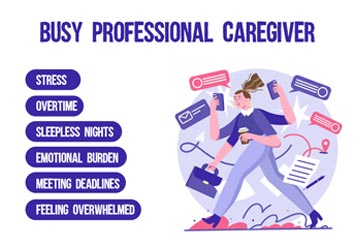Understanding Respite Care
Individuals who are generally looked after
by family members or other close friends can receive respite care. It is
designed to offer the primary carer a break, allowing them to rest and refuel,
tend to personal needs, or engage in other activities. Additionally, it may
allow the person getting care to socialise and experience a new environment.
The Value of Intermittent Care
It can be difficult and emotionally
draining to care for a loved one who is elderly, disabled, or suffering from a
chronic illness. High levels of stress and anxiety can be common among carers,
especially if they are entrusted with the person's care on a full-time basis.
With the knowledge that their loved one is receiving the care they require,
respite care provides the primary carer with a break and enables them to
recharge.
A change of scenery, more socialising, and
the chance to connect with new carers and peers are all advantages of respite
care for the person receiving it. In addition, it might be an opportunity for
them to try out novel treatments or pastimes that are unavailable at home.
The Advantages of Interim Care
The primary carer and the person receiving
care can both benefit from respite care, which includes the following:
·
Lessened stress and burnout for
the main carer: Respite care enables the main carer to take a break from the
demands of caregiving, lowering the risk of stress and burnout.
·
Betterment of the primary
caregiver's mental and physical health: Respite care enables the primary carer
to take care of their own needs, engage in hobbies they like, and take a break.
·
Better quality of life for the
person receiving care: Respite care can offer a change of scenery and
opportunities for interaction, as well as the chance to try out novel therapies
or pastimes that are unavailable at home.
·
Greater safety and well-being
for the person receiving care: Respite care providers are educated to offer a
high standard of support and care, assuring the safety and well-being of the
person receiving care.
Different Forms of Respite Care
Depending on the needs of the patient and
the primary carer, respite care can take many different forms. Typical forms of
respite care include:
·
In-home care: This entails
sending a respite carer to the residence of the person receiving care to offer
support and care.
·
Facility-based care: This
entails placing the person receiving care temporarily in a hospice, assisted
living community, or nursing home.
·
Adult day care: This entails
enrolling the person who needs care in a programme for adults that offers both
care and social interaction with other adults.
·
Camps and retreats: This can
involve arranging for the person receiving care to go to a camp or retreat that
is especially intended for people with disabilities or chronic diseases.
How to Choose the Best Respite Care
Depending on the need of the person being
cared for and the primary carer, respite care can be given in a variety of
venues. It is crucial to pick the proper kind of care for the person and their
unique requirements, as well as the requirements of the primary carer. To come
up with the ideal care plan, it is crucial to confer with medical experts, the
main carer, and the person who will be receiving care.
To sum up, respite care is a kind of temporary care given to people who are usually looked after by family members or other close friends. It is designed to offer the primary carer a break, allowing them to rest and refuel, tend to personal needs, or engage in other activities. Additionally, it may allow the person getting care to socialise and experience a new environment.
Respite care has numerous advantages for both the primary carer and the person receiving care. These advantages include lowering stress and burnout for the primary carer, enhancing mental and physical health, and enhancing safety and wellbeing for the person receiving care. It can come in a variety of shapes and sizes, including in-home care, facility-based care, adult day care, camps, and retreats that can be customised to the unique requirements of the person and the main carer. To come up with the optimal care strategy, it is critical to select the appropriate form of care and confer with medical experts, the primary carer, and the person receiving care. Overall, respite care can give the primary carer a much-needed break and guarantee that the person receiving care is receiving the finest care and support available.




